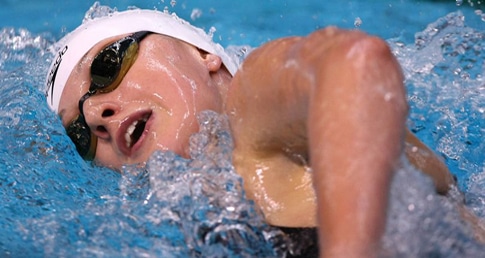
How to optimise swimming recovery after a hard workout
October 22, 2015Most people who take part in intense exercise know that feeling after a hard training session. The aching, burning feeling that you get in your muscles the day after. This is caused by a build-up of lactic acid in the muscles which needs to be removed.
Most people don’t know how to remove lactic acid from the muscles. So what are the best ways of recovering after some strenuous pool time?
5 tips to help you optimise swimming recovery
- Warm Up and Cool Down
This might sound obvious but warming up and cooling down need to be done properly. Warming up should be done using dynamic stretches which work to release lactic acid from previous sessions. They get your muscles warm and ready to train. Static stretches should be done post-training. They stretch out the muscles and stop them from being tight. An effective cool down involves periods of easy swimming.
Swim between 200m and 800m to remove the lactic acid in the muscle which is given out by the body, or changed to energy again. If you finish a hard swim and just stop, the lactic acid in your muscles is not fully removed. This will leave you feeling stiff and sore. - Hydration
In everyday life, you should stay hydrated by drinking water. But it is even more important to do so when exercising. And many swimmers don’t realise just how much they sweat in the pool.
If the taste of chlorine from the pool makes fresh water taste a bit off, try some light diluted squash. You’re not an Olympic athlete training for many hours per day so don’t take on too much sugar as it will have a negative effect on your blood sugar level. - Nutrition
You might not fancy a heavy meal before you go to the pool (it’s also not recommended). But make sure you have eaten something to fuel your body for your workout. Try having some slow release complex carbohydrate and protein like porridge.
After training, why not try a protein shake with a banana to start to maximise the recovery process? This will build muscle, improve immune system function and increase body metabolism to burn more body fat. You could either blend in a banana, or eat it as you drink your shake.
Protein always needs an energy source in order to enter the muscles efficiently. It helps them to repair, grow and recover. The energy from a banana is ideal to maximise the synthesis of the protein. - Get plenty of sleep
Of course, a hard workouts will help you to sleep more deeply. Research suggests you should try to get an about seven to eight hours per night to make sure your body has time to recover for a new day. - Try a massage
After a hard swimming workout, micro-tears and small knots develop in your muscles. A sports massage is a great way of speeding up the recovery of your muscles. Massage helps get rid of metabolic waste from your muscles and other tissues. Aim to get a massage at least once a month.
Research shows that ‘trigger point manipulation’ can also help with swimming recovery greatly. These trigger points often slow down muscle contractions, blood flow and speed. It is now used by many elite athletes and involves using a foam roller or massage stick. You roll this over your limbs and body after a session in the pool. Do this once or twice a week and you should see results.
 Masters Swimming Hub
Masters Swimming Hub



